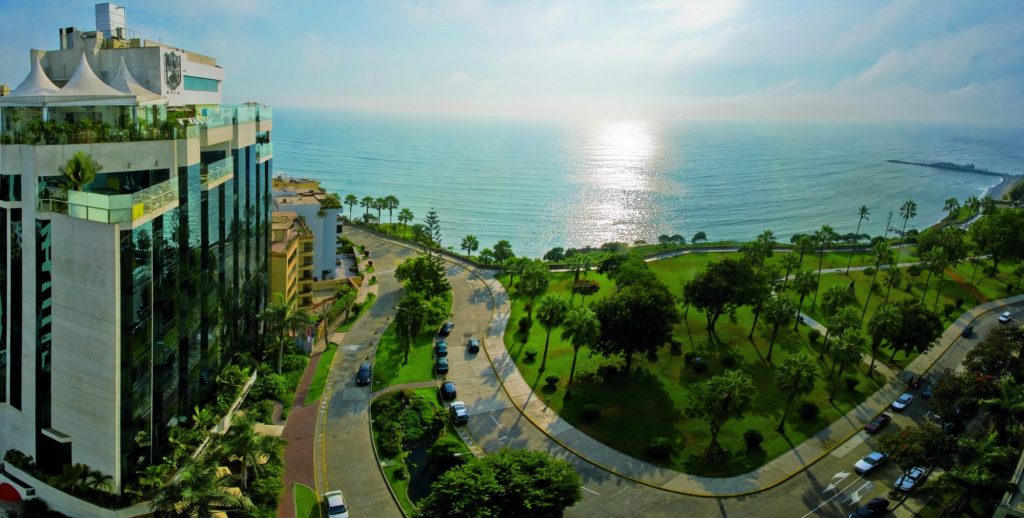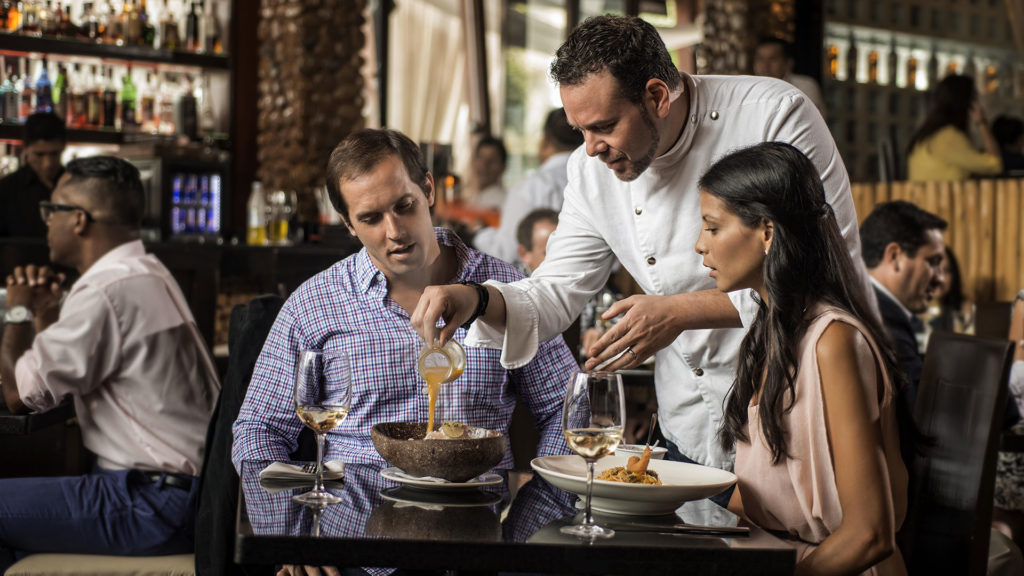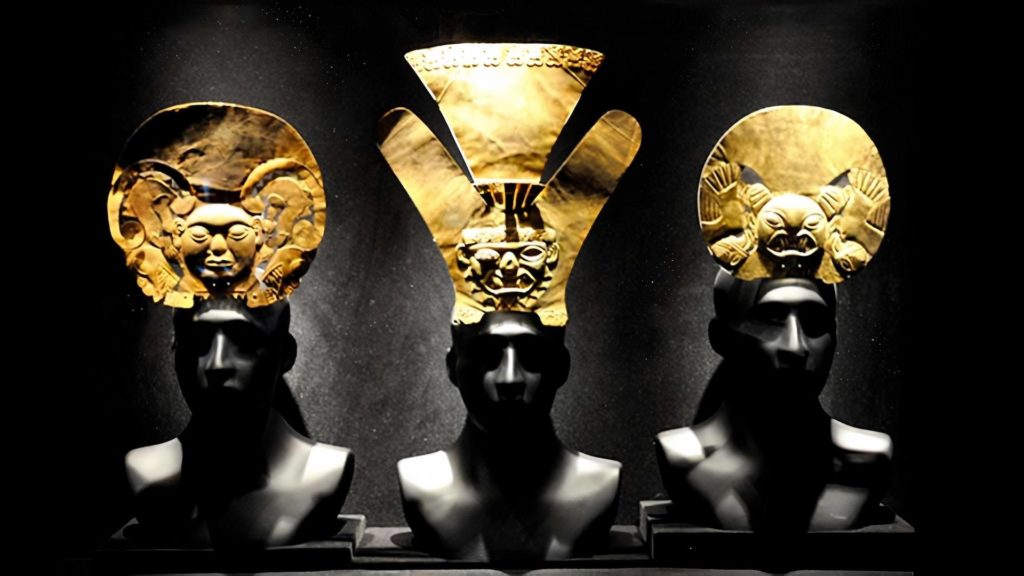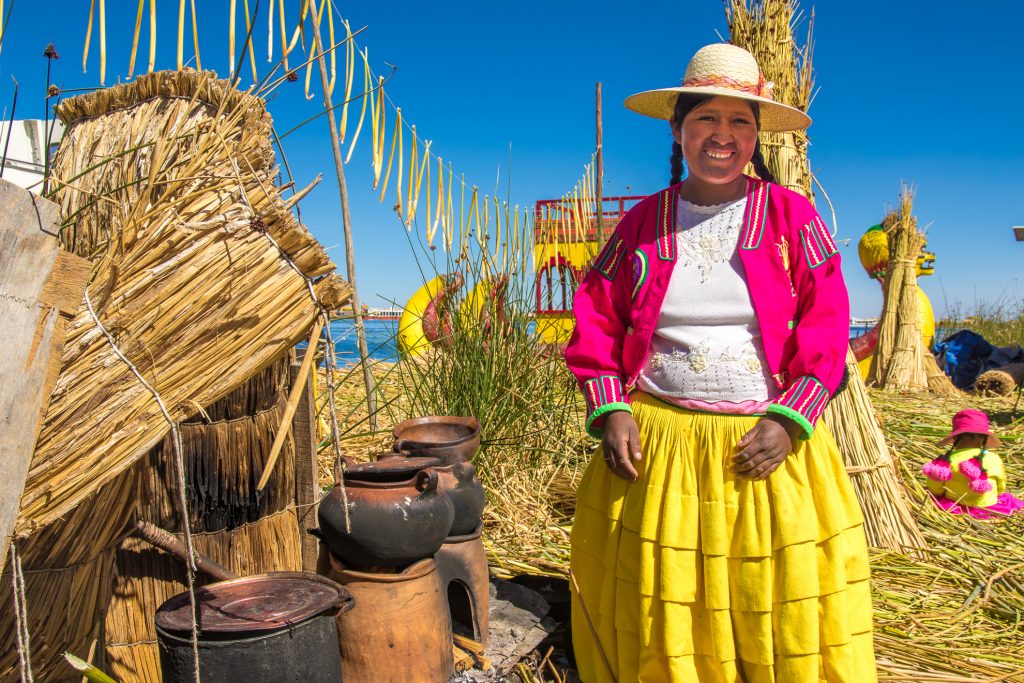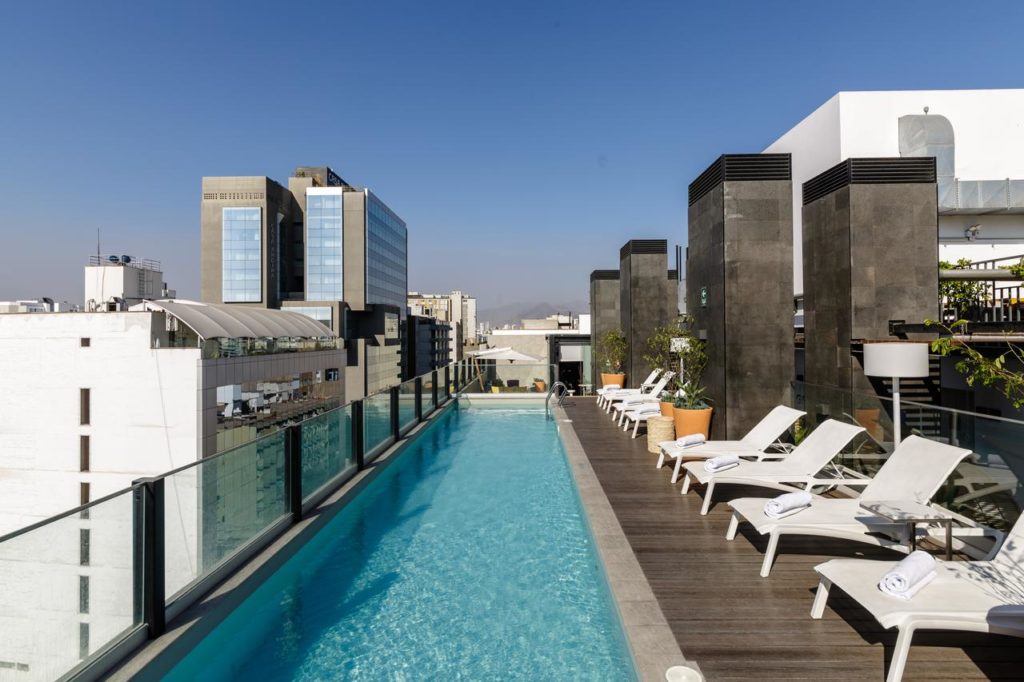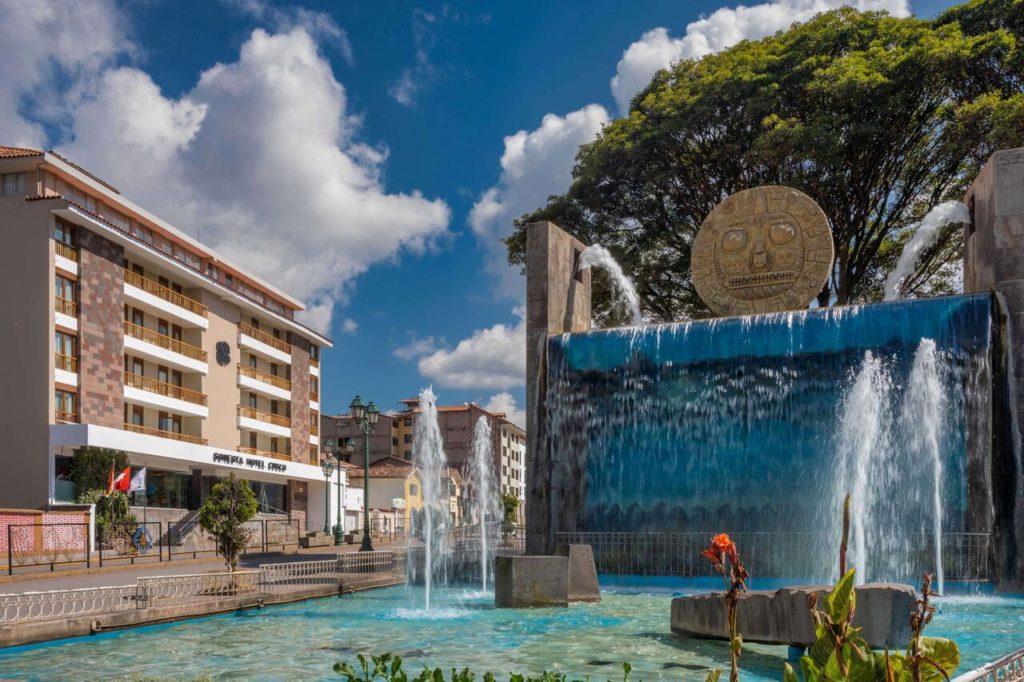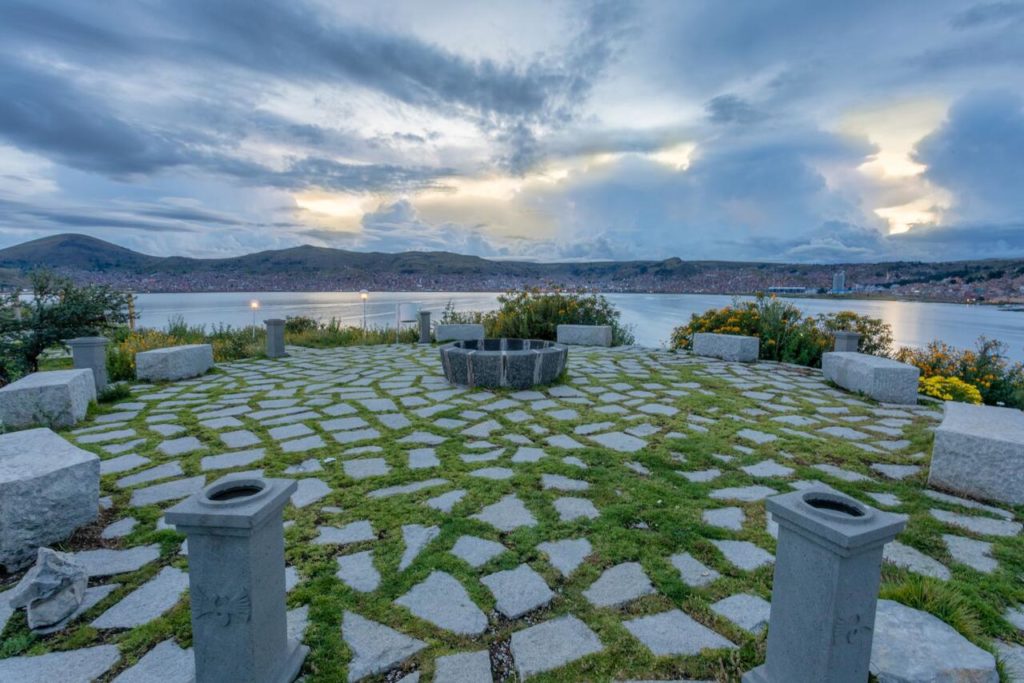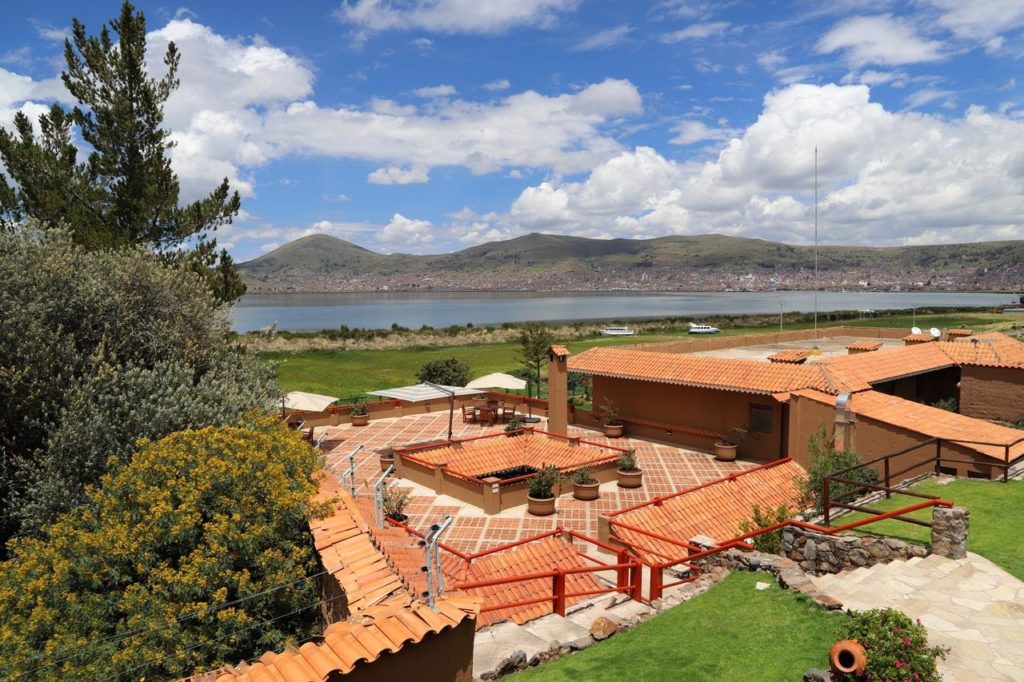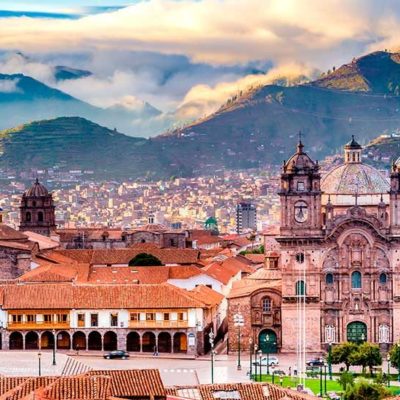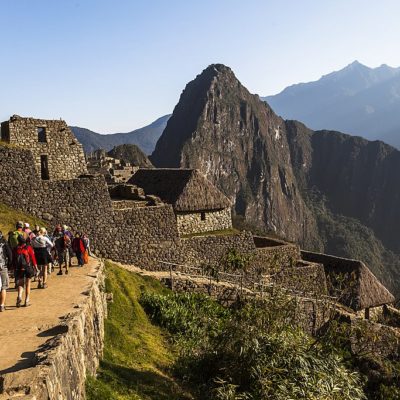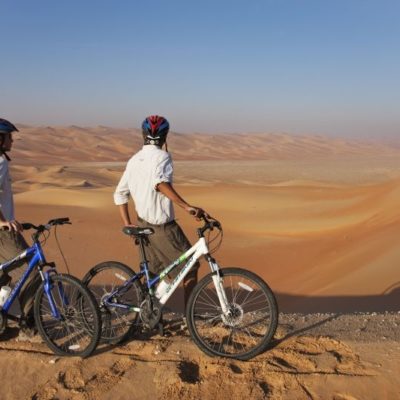Peru is host to a number of marvellous natural sites and is a nation of deep history. The must-see site of the nation is Machu Pichu which you will explore on this trip, alongside the breathtaking Lake Titicaca. From relaxing by the water to exploring some of the world’s best archaeological sites, this tour offers a variety of ways for you to enjoy your holiday.
- Lima
- Cusco
- Sacred Valley/ Machu Pichu
- The Belmond Hiram Bingham Train
- Puno
- Lake Titicaca
This 8 day trip sees you explore a number of the most incredible sites of Peru. Beginning your trip in the capital in Lima is a great way to start. The city offers relaxing tours to convents, churches, and historical plazas and centres, as well as beautiful gardens, bars and nightspots. It is a unique combination of ancient tradition with contemporary culture.
Lima & Vicinity
Lima, the capital of Peru, is situated on a plateau overlooking the Pacific Coast. It is a sprawling metropolitan city of over 10 million Peruvians and is a naturally perfect location for sampling the famed national cuisine with its vast base of ingredients and spices. Furthermore, the city offers relaxing tours to convents, churches, and historical plazas and centres, as well as beautiful gardens, bars and nightspots. Meanwhile, the ancient tradition is very much alive at Huaca Pucllana temple, just steps away from the hotels and hostels of central Miraflores district and the impressive Pyramids of Pachacamac are just a 40km drive south.
You will then find yourself on the way to Cusco. Originally the historic capital of the Inca Empire, Cusco is the site of acclimatisation before the journey onward to Peru’s biggest attraction. Cusco is pleasant to explore with wonderful and ancient stonework, narrow streets and important Inca temple remains, complemented by the Spanish colonial buildings. Numerous museums showcase Inca and pre-columbian culture, as well as textiles and sacred plants.
Cusco & Vicinity
Cusco was originally the historic capital of the Inca Empire, now a UNESCO World Heritage Site. It has an elevation of over 11,000 feet allowing visitors to acclimatise before setting off on long treks towards Machu Picchu’s on legendary routes used by the Incas towards the citadel. Cusco is pleasant to explore with wonderful and ancient stonework, narrow streets and important Inca temple remains, complemented by the Spanish colonial buildings. Numerous museums showcase Inca and pre-columbian culture, as well as textiles and sacred plants. Being a rich agricultural region, many fusion and neo-Andean restaurants offer unique Peruvian gastronomy. Meanwhile, day trips to nearby lagoons can be connected with visits to Inca ruins such as Pisac, Tambomachay, Kenqo, Sacsayhaman and Ollantaytambo.
Machu Pichu is the next stop, a breathtaking site that has to be seen to comprehend. Built in the 15th century for the Inca emperor, Pachacuti, this site is just as remarkable now. It hold a lot of history and is one of the biggest historical discoveries of the 20th century.
Sacred Valley
The Sacred Valley of the Incas is the eternal home of abundance for the indigenous and locals who continue to call this area home. The Sacred Valley is essentially the Urubamba Valley, home to flourishing lands and rivers perfect for agriculture. It is also home to Machu Picchu, built in the 15th century for the Inca emperor, Pachacuti. From Cusco, the former Inca capital, visitors can decide on trekking an “Inca trail” of multiple days, or taking the train to visit the world wonder of Machu Picchu. All routes wind around dramatic peaks, rivers and archaeological sites, with regular rest stops at scenic points, and camping for up to three nights (depending on trail length). The region was known by many civilisations for its agricultural potential, and towns such as Ollantaytambo were once country retreats for Inca royalty.
Puno will be your final stop, the home of one of the biggest lakes in South America. The gigantic Titicaca Lake is half Peruvian territory, and half Bolivian. At an altitude of approximately 4,000m above sea level, it is often chilly, but usually sunny. As a commercially navigable lake, its sheer size has attracted native peoples for millennia – long before the Incas.
Titicaca Lake
The gigantic Titicaca Lake is half Peruvian territory, and half Bolivian. At an altitude of approximately 4,000m above sea level, it is often chilly, but usually sunny. As a commercially navigable lake, its sheer size has attracted native peoples for millennia – long before the Incas. On the Peruvian side, the traditional Llachon people live around a scenic peninsula beside the shallow Bay of Puno. On the islands of Amantani and Taquile, close in proximity, there are textile-producing communities living among Inca and pre-Inca ruins. Near the north shore, Suasi Island offers a luxury eco-lodge with stunning lake views. The star attractions, however, are the Uros people, who inhabit dozens of floating islands constructed entirely from reeds.
When you arrive at the airport you will be greeted and taken to your hotel. Look for a sign with your name on it and a private transfer will take you to your hotel. You will spend the night in Lima ready to explore the city the following day.
A city tour will fill your next day. The tour begins driving through the modern residential districts of Miraflores and San Isidro. You will stop at Parque del Amor (Love Park) and enjoy a nice view of the Pacific Ocean, as you drive down the Miraflores Malecon, a road along the cliffs overlooking the ocean. The jounrey continues into downtown Lima’s Historical Center, acknowledged as a Heritage of Humanity site in 1991 by UNESCO. This is where the Spanish colony was established and where the first buildings were erected in the 16th century.
After exploring the city, you continue with the Larco Museum. Located in an 18th century vice-royal mansion, built on and pre-columbian pyramid of the 7th century. Its new galleries display the best and most complete collectionof gold and silver of Peru together with its famous collection of erotic pottery.
Again, you spend the night in Lima.
A transfer and plane journey will take you to Cusco. Your transfer are included however flights are not.
Upon arriving at Cusco, you will be taken on a City Tour of the area. Cusco is the spiritual center and ancient capital of the Incas. Once called “the navel of the world”, it was the centre of the four corners of the Tawantinsuyo Empire.
In the afternoon you will start your tour visiting the Qorikancha better know as the Golden Temple, considered the Incas’ most important religious centre. Next you will visit the impressive city of Cusco, built on top of the foundations of Inca palaces. Later on you will board a bus to visit the archaeological centres near the city. You will stop at the San Cristobal lookout where you will enjoy a panoramic sight of Cusco. Next you will visit Sacsayhuaman, where you can see its impressive stone buildings and hear about the construction techniques used by the Incas. You will continue your journey through the ceremonial centers of Qenqo, Puka Pukara and Tambomachay. Entry to all sites is included.
After spending the night in Cusco, you will then take a trip to Sacred Valley. You start your visit to the Sacred Valley of the Incas. Your first stop will be at a Textile Centre where you will see a demonstration of textile arts in its most natural expression. You will also get to see some native animals of Peru, some of them in danger of extinction. Next you will go to the Pisac Archaeological Complex. You will also visit the artisan market and continue to the Valley of Urubamba. Later on, you will go to the town of Ollantaytambo and visit the Archaeological Complex. Manco Inca used this complex as a fortress during the time of the Spanish conquest.
As you return to the city of the Cusco there will also be a visit to the town of Chinchero, famous by its handmade textiles. You will stay again in Cusco.
A transfer takes you from your hotel to Poroy Station. From here, the train will take you on a unique experience through the Andes to Machu Pichu.
Once onboard, the maître will invite you to a brunch and gourmet lunch. The return trip includes a fine dining experience at dinner. In both cases, you can accompany your meals with beverages (non-premium) and an excellent wine selection.
Machu Pichu is the biggest attraction of Peru and is an incredibly special site. Machupicchu was only re-discovered in 1911 by the explorer Hiram Bingham, who the train jounrey is named after. The train is even in a traditional 1920s style. Machu Pichu consists of two main areas one agricultural, formed mainly by mountains and food stores, and the other urban, which is noted for its sacred zone with its temples, squares and royal tombs.
After some time exploring, you will take the trian back and a transfer will take you to your hotel.
You will leave Cusco early in order to visit some of the most wonderful destinations in Peru. Among those visits will be the Andahuaylillas “Sistine Chapel of America”. Another amazing visit is to the Raqch’i archaeological site and the Temple of Wiracocha found within. The temple itself is about 25 meters wide and 92 meters long, and at least 15 meters high. Most of it is made of rock, the rest is adobe. The function of the temple was very unique, but mostly of religious origin.
La Raya Pass is an important border marker between the regions of Cusco and Puno. The natural area of the zone is known as Puna and the surrounding flora is mainly straw or Peruvian feather grass. This amazing landmark is also the highest point in between Cusco and Puno, at a high 4,338 meters absl. It can be cold and the remote area is mostly populated by locals, vicuñas and llamas. However, it is the one place where you can see the beautiful peaks surrounding the area in the Andes Mountain Range.
Finally, one of the last visits on your way to Puno is the Pukara Museum. Pukara was originally the first regional population closest to Lake Titicaca dating back to 500 BC. The museum is part of an archaeological site and features many galleries with stone sculptures, impressive pieces of pottery, and many other artefacts recovered from the site and neighbouring areas.
After arrival, you will spend the night in Puno.
The following day you will enjoy a tour to Uros and Taquile Islands.
You will be picked up from your hotel and transferred to Titicaca Lake dock to start this excursion. Indulge and immerse in the splendour and spirit of the Titicaca Lake surrounded by stunning scenery and astounding Andean geography.
The excursion to the Titicaca Lake starts with a visit to the Uros Floating Island is wonderful. A group of 40 big islands like packs of floating ‘totora’, located within the Titicaca National Reserve, where the Uros and travellers of the lake, continue living like their ancestors did, preserving their customs and idiosyncrasy but above all, their own system of communal life. You will navigate towards Taquile Island, another peculiar island in the middle of the huge Lake Titicaca. Visiting Taquile will give you an idea of the customs and traditions of the indigenous inhabitants and how these people are able to maintain themselves, far away from the civilised world.
Stay your last night in a hotel by the lake.
For your final day you will have a private transfer from the hotel to the airport for your departure.
Dates are flexible so please make an enquiry and tell us a range of dates you are considering so we can check availability.
Visa requirements:
Keep in mind that you are responsible for verifying the visa requirements of your destination country and then obtaining the visa accordingly.
In addition, most countries require that travelers hold a passport that is valid for at least six months from the day of entry into the country, so confirm that you meet the passport, visa and medical requirements (if applicable) of the country of entry in advance.
- Accommodation based on double room including breakfast (except day 1).
- Transfers, excursions, meals, entrances as mentioned.
- Children discount applies only for children under 12 years old.
- Excursions and meals not mentioned in the program
- Entrance to Pisac and Ollantaytambo not included on Day 4
- Travel Insurance
- Drinks, tips and personal expenses
- International flights
- Domestic flights
- Prices can vary if there are new biosecurity protocols in the capacity of vehicles or number of persons per guide as well as other regulations the government will consider as mandatory to implement
Suitable for ages 5 to 80
